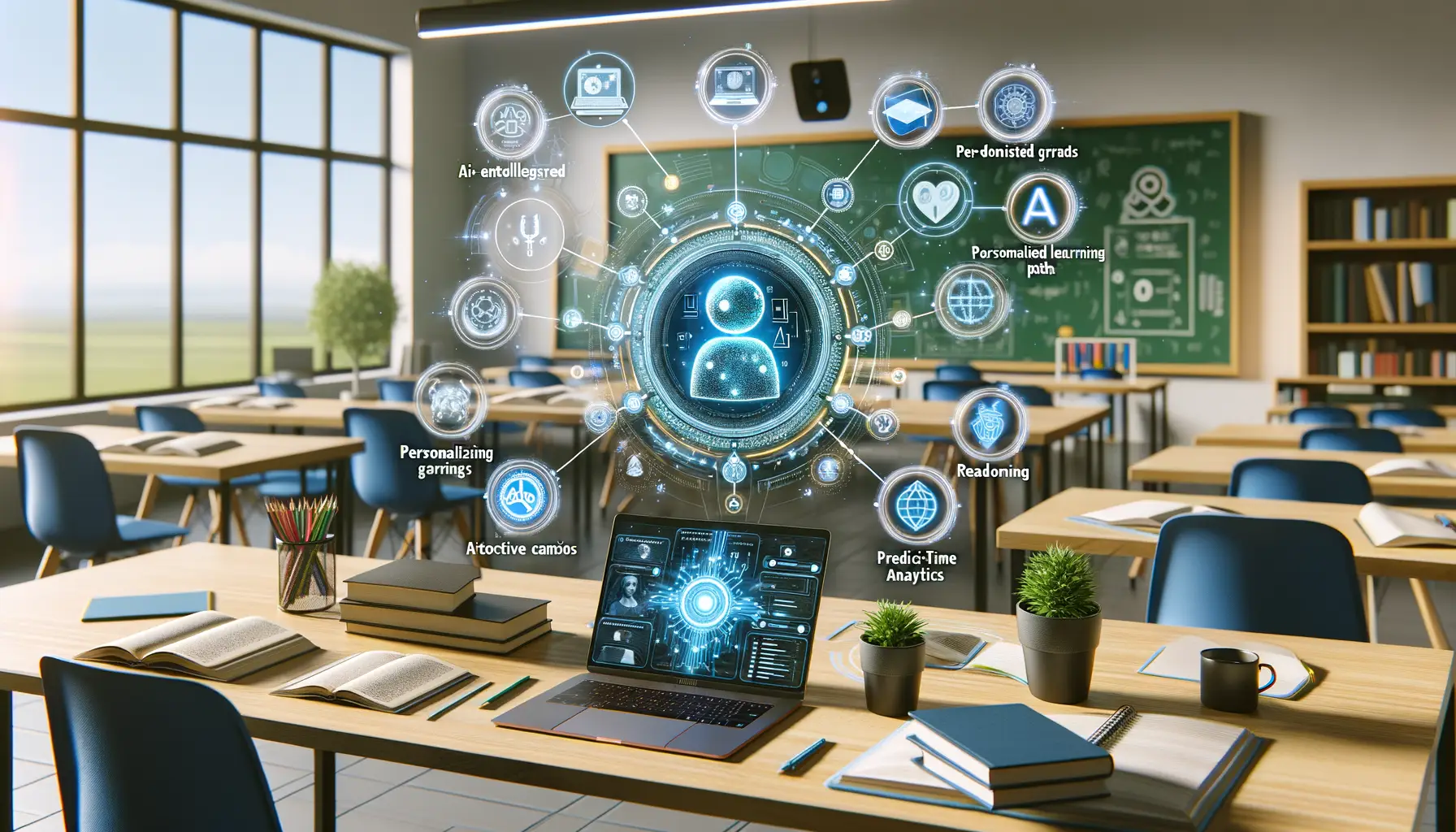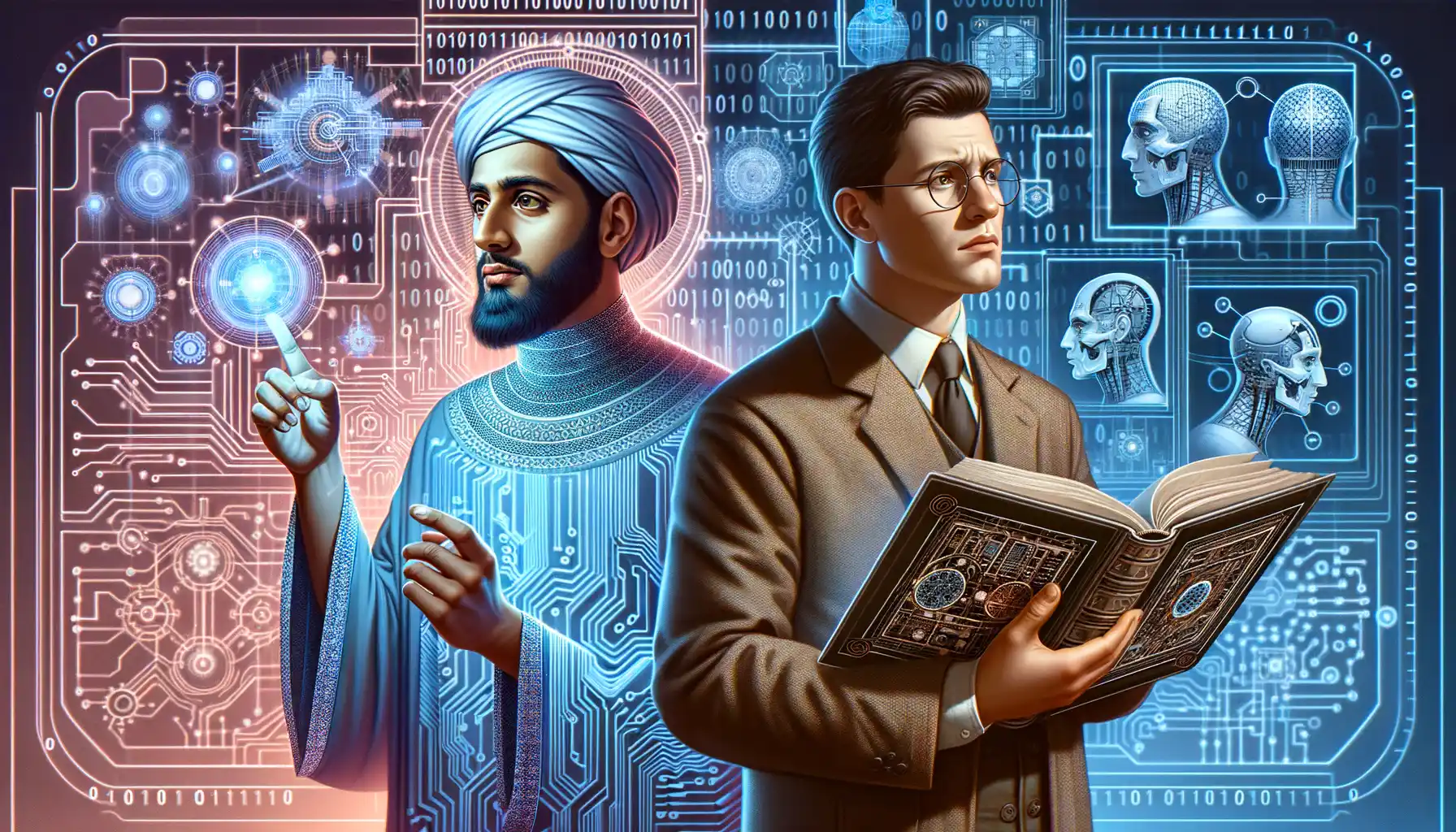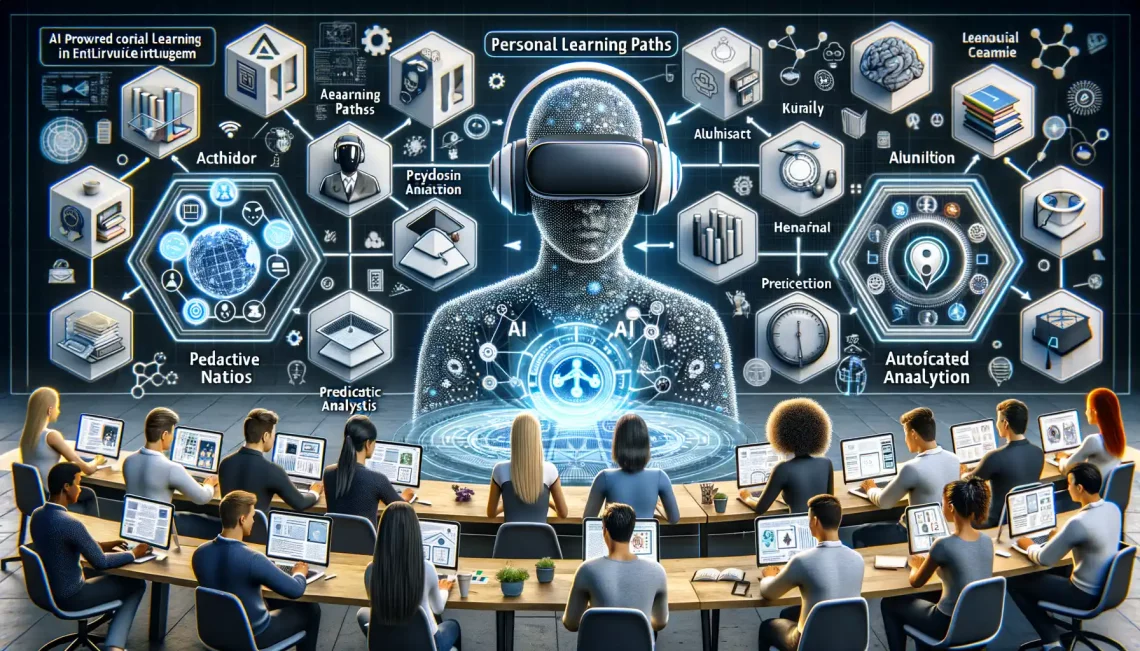Introduction to AI in E-Learning
The Dawn of a New Learning Era
Imagine stepping into a classroom where the lessons seem whisper-tailored just for you. That’s exactly what AI is doing for e-learning! Think of it as having a virtual tutor by your side—one that knows when you’re struggling with fractions or breezing through grammar rules. This isn’t futuristic sci-fi; it’s happening now, and it’s radically reshaping how knowledge is shared and absorbed.
With artificial intelligence, learning platforms aren’t one-size-fits-all anymore. Instead, they’re growing smarter, more intuitive, and eerily good at understanding us. Platforms powered by AI can:
- Analyze your progress and provide recommendations to keep you on track.
- Offer personalized quizzes that focus on YOUR weak spots, not generic ones.
- Even predict when you might lose interest and step in with just the right push!
Why Now is the Time for AI in Learning
Let’s be real – keeping students engaged in a digital world filled with cat memes and TikToks is no small feat. That’s where the magic of AI-driven interaction comes in. From chatbots answering your 2 AM questions (we see you, procrastinators!) to immersive simulations that bring history or science to life, AI brings both fun and focus to e-learning.
It’s not about replacing teachers but amplifying them. Think of it as giving educators superpowers to understand individual student needs and craft unforgettable learning experiences. The result? A future where every learner gets a seat at the table—and the meal is customized just for them!
Key Applications of AI in E-Learning

Personalized Learning Experiences Powered by AI
Imagine a classroom where every student gets a personal tutor tailored just for them. That’s exactly what AI brings to e-learning platforms. Through tools like adaptive learning algorithms, students are no longer forced into one-size-fits-all lessons. Instead, these smart systems analyze individual strengths, struggles, and even how fast a learner clicks through a module. The result? A customized learning journey that feels almost human-made.
Take language learning as an example: AI-driven apps like Duolingo can detect if you’re breezing through vocabulary but fumbling with grammar. It then adjusts upcoming lessons to focus on your weak spots without missing a beat. It’s like having a teacher who reads your mind—or at least your progress report.
- Interactive quizzes that evolve based on your performance.
- Content recommendations that match your interests and goals.
- Progress dashboards that transform dull statistics into motivation boosters.
AI-Powered Virtual Assistants: The Study Buddy You Always Wanted
Think of AI virtual assistants as the Siri or Alexa of your learning world—but smarter. These chatbots don’t just answer questions; they ask them too! For instance, you could be studying history, and your assistant might chime in with, “Did you know Napoleon lost his final battle at Waterloo? Shall we dive deeper?” They’re conversational, intuitive, and so good at turning dull facts into memorable stories.
And when it comes to keeping learners on track, AI assistants double as motivational coaches. Missed a deadline? Your digital buddy will not only remind you but suggest bite-sized tasks to help you catch up. Now, that’s teamwork!
Benefits of Implementing AI in E-Learning Platforms

Revolutionizing Learning with Personalized AI Experiences
Imagine walking into a classroom built entirely for *you*. That’s exactly what implementing AI in e-learning platforms feels like—your own personal tutor who knows your strengths, struggles, and quirks. AI thrives on customization, turning generic lessons into tailored roadmaps for success.
With features like adaptive learning, AI adjusts the pace and content of courses based on how quickly you grasp concepts. Struggling with algebra but acing geometry? No problem. AI will shift its focus to ensure your weaknesses become your superpowers. Think of it as having an educational sidekick, quietly working behind the scenes to give you that “aha!” moment.
- 24/7 accessibility: Your learning buddy doesn’t sleep! Forget waiting for office hours; AI is always ready to break down tough topics.
- Instant feedback: Confused about a wrong answer? AI delivers immediate, clear explanations, so no confusion lingers.
Boosting Engagement Like Never Before
Say goodbye to boring slide decks or endless PDFs. With AI, interactive elements such as chatbots, virtual simulations, and gamified quizzes invite students into an engaging, dynamic universe. Picture yourself solving math problems alongside a fun storyline or exploring history through vibrant AI-generated timelines.
Beyond engagement, these tools sharpen retention. Using techniques like spaced repetition and predictive analytics, AI ensures information sticks like glue. Education becomes less of a chore and more like unlocking new levels in your favorite video game.
Challenges and Solutions for AI Integration

Overcoming the Hurdles of AI Adoption
Integrating AI into e-learning platforms isn’t a walk in the park—it’s more like assembling a 1,000-piece jigsaw puzzle with no picture on the box. One major challenge? The intimidating cost of implementation. Advanced AI systems often demand substantial financial investment, especially for smaller organizations. But here’s the kicker—it’s not just about the money. Aligning AI with your existing systems can feel like trying to fit a square peg into a round hole.
What’s the fix? Start small. Instead of diving into an ocean of AI features, begin with targeted tools, like integrating chatbots for 24/7 student support or using adaptive learning algorithms. These don’t require breaking the bank but still create tangible results.
Tackling Bias and Data Privacy Concerns
Then there’s the elephant in the room: bias. Without diverse datasets, AI can unintentionally favor one group of learners over another. And privacy? Collecting vast amounts of student data can trigger discomfort faster than you can say “algorithm.”
Let’s unpack solutions:
- Ensure datasets reflect diversity to build fairness into the system.
- Adopt transparent, GDPR-compliant practices to protect data security.
The bottom line: it’s not about perfection; it’s about progress toward a smarter, fairer education journey.
Future Trends and Implications of AI in Education

AI as the Co-Pilot for Personalized Learning Journeys
Picture this: a classroom where every student has their own tailored path to success, like a personal GPS for their learning. Sounds futuristic? Well, the future is closer than you think. Thanks to advancements in AI technology, e-learning platforms are evolving from one-size-fits-all experiences into highly customized ecosystems.
AI isn’t just organizing content—it’s playing matchmaker between student and subject. Through real-time data analysis, platforms can identify when a learner struggles with, say, algebra, and suggest bite-sized videos or gamified quizzes to reinforce understanding, much like a coach giving targeted advice during practice.
We may soon see AI creating unique micro-learning modules for every individual, incorporating formats like podcasts, virtual reality simulations, or interactive case studies depending on what clicks best for the user.
- Natural language processing might enable platforms to have fluid conversations with students, answering questions as intuitively as a teacher would.
- Predictive analytics could redefine assessments by flagging at-risk learners long before exams come into play.
Reimagining Educators’ Roles in an AI-Enriched World
As AI takes on repetitive tasks like grading or admin work, educators will find breathing room to focus on what truly matters: inspiring curiosity and nurturing critical thinking. Think of AI as the backstage crew supporting a Broadway show—it ensures the spotlight stays on the performers (in this case, both teachers and students).
Imagine a teacher armed not only with books but with insights that predict how each student learns best—whether they’re visual thinkers, hands-on doers, or quiet reflectors. AI-driven learning insights could also shape lesson plans dynamically, shifting topics based on the class’s overall mood or performance that day.
This shift challenges educators to step further into roles as mentors and creative guides. It’s no longer about delivering content; it’s about weaving human connection into the tech-enhanced tapestry of education. That’s the beauty of where we’re headed.






